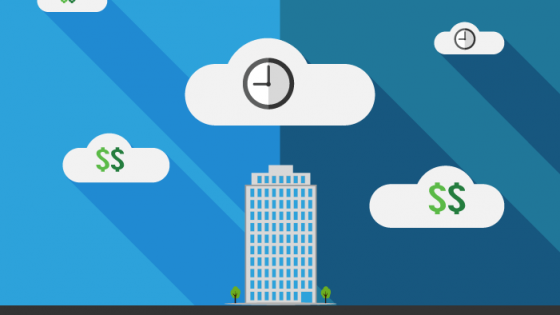Thinking of switching to the Cloud? You may be surprised by how much your business can benefit by scrapping the old school premise IT. Business owners are spending too much money by not considering the Cloud. This article will compare similarities and differences of Premise IT vs. Cloud Computing.
The main difference of the two is how they are accessed. It’s a simple explanation, based on the terms. “Premise IT” solutions are installed directly on the user’s computer whereas Cloud solutions are accessed through the internet. The second difference is when using the Cloud; companies use a “pay as you go” method, which is incredibly helpful for accounting purposes. When using premise IT, companies pay the traditional large upfront costs. Over time, the Cloud will save your company significant sums of money without having to deal with up front and on-going IT expenses.
See also: (7 Ways Construction In The Cloud Can Help Your Company)
IT Infrastructure:
- Cloud Computing: Limited or no internal IT resources or need to invest in additional IT infrastructure.
- Premise IT: IT support personnel with domain software, security, routers, firewalls and infrastructure for data backup.
Access:
- Cloud Computing: Via the Internet by computers, laptops, tablets, mobile devices, etc.
- Premise IT: Client server for local workers or Terminal Server for remote employees.
Company Profile:
- Cloud Computing: Companies are able to grow and invest in a flexible solution which allows access anytime, anywhere without heavy investment in IT infrastructure.
- Premise IT: Minimum time frame for solutions is approximately 5-7 years. Companies pay the upfront costs to purchase and implement the software.
Remote Locations:
- Cloud Computing: Ability to access the Cloud from multiple geographic locations; access the same data concurrently.
- Premise IT: Have numerous locations with a supporting network infrastructure.
Software Investment:
- Cloud Computing: Companies pay monthly for everything from software support and infrastructure to software upgrades and daily back-ups.
- Premise IT: Upfront purchase with annual maintenance renewals as well as the ownership of the software.
Initial Services Investment:
- Cloud Computing: Implementation services cost less than premise IT since the Cloud vendor takes care of infrastructure preparation, installation and configurations.
- Premise IT: According to Arxis, “A good rule of thumb is to spend anywhere from $1-$2 for every dollar spent on the initial software license.”
Ongoing Services Investment:
- Cloud Computing: Business method consulting as needed.
- Premise IT: Technical support and business consulting as needed as well as software upgrades every 12-24 months.
See also: (QuickBooks Online vs. QuickBooks Desktop)
Infrastructure/Hardware Investment:
- Cloud Computing: An internet connection.
- Premise IT: IT modules such as data backups, server hardware & software, disaster recovery, remote access, network connectivity and storage.
User Interface:
- Cloud Computing: Customizable interface and easy to use web-based applications.
- Premise IT: Modern technology with a traditional Windows interface.
Software Customization:
- Cloud Computing: “Think ‘configuration’, not heavy customization” states Arxis.
- Premise IT: Integration and customization capabilities for businesses who require widespread custom programming services.
See also: (Are Bookkeepers Becoming Obsolete?)
 Implementation Time:
Implementation Time:
- Cloud Computing: Depending on the size of the project, however the Cloud ends up costing less than premise-IT solutions since the vendor takes care of it all.
- Premise IT: Depending on the size of the project but generally the implementation time takes about 1-2 months longer than the Cloud.





